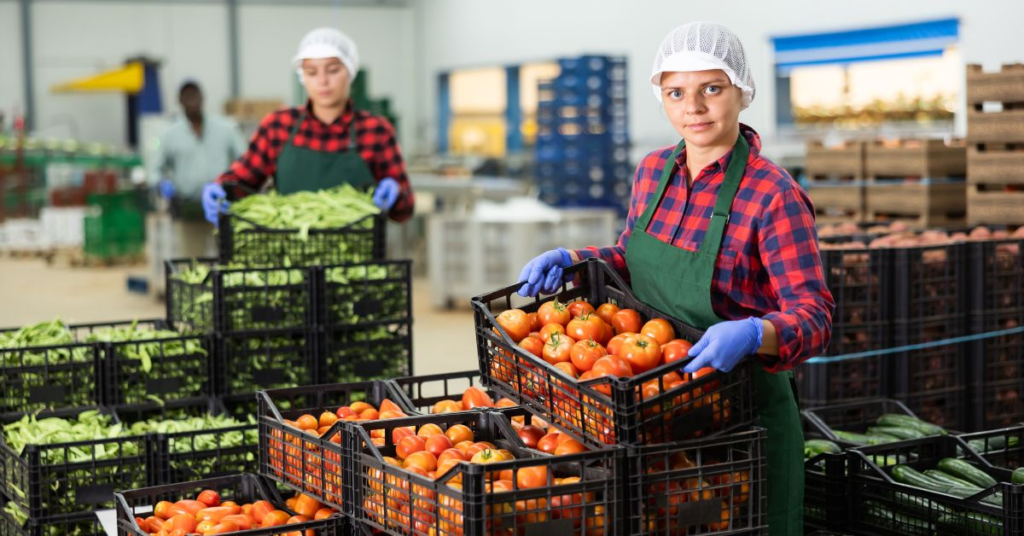
From Farm to Fork: The Tech Revolutionizing Food Safety
Food safety isn’t just a behind-the-scenes process anymore. It’s becoming smarter, faster, and more transparent—thanks to a surge of new technology changing everything from how crops are grown to how products land on your plate. Millennials and Gen Z consumers are especially driving this demand for traceability, clean labels, and real-time transparency.
Let’s break down how three powerful technologies—blockchain, AI, and IoT—are reshaping food safety from farm to fork.
Blockchain: Building Trust One Block at a Time
Blockchain is often linked to cryptocurrency, but its real-world value in food safety is growing fast. Blockchain is a digital ledger. Once information is added, it can’t be changed—making it perfect for tracing food products back to their source.
Imagine scanning a QR code on a juice bottle and instantly seeing where the oranges were grown, when they were harvested, and how they were processed. That’s blockchain at work.
Why it matters:
- Faster recall: Companies can pinpoint the source quickly in case of contamination.
- Improved accountability: Each player in the supply chain is visible.
- Consumer trust: Buyers can verify product origins and quality without guesswork.
Walmart and IBM have already teamed up to use blockchain to track lettuce. The result? A recall process that used to take days now takes seconds.
AI: Predict, Prevent, Protect
Artificial Intelligence is making food safety proactive instead of reactive. AI tools can detect patterns and predict risks before they become problems.
In a food production setting, AI can analyze data from sensors, logs, and employee reports to:
- Detect signs of contamination.
- Monitor equipment health.
- Analyze supply chain trends.
- Flag potential violations
For example, an AI system can learn from past data to forecast when a particular batch of raw chicken might spoil faster due to temperature fluctuations during transport.
AI in action:
- Chatbots assist with customer safety concerns and allergen info.
- Computer vision systems spot defects or foreign objects on production lines.
- Predictive maintenance keeps machines running safely with fewer breakdowns.
IoT: Smart Sensors, Real-Time Safety
The Internet of Things (IoT) connects physical devices to the Internet, letting them collect and share data automatically. In food safety, IoT devices include smart thermometers, humidity sensors, and GPS trackers.
Where IoT helps:
- Cold chain monitoring: Sensors track temperature in real-time during transport. If milk gets too warm, alerts go out immediately.
- Equipment monitoring: Sensors detect when machines are operating outside safe parameters.
- Water quality checks: IoT can monitor farms for pesticide runoff or water contamination.
With IoT, businesses no longer rely on manual logs or guesswork. Every step is monitored and recorded, ensuring compliance and protecting consumers.
Why This Matters to Millennials and Gen Z
These generations don’t just want food—they want food they can trust.
- 70% of Gen Z consumers say they are more inclined to buy from brands that share detailed sourcing and production information.
- Millennials want ethical and sustainable sourcing and are willing to pay more for it.
- Both groups value transparency and expect digital access to product data.
Technology empowers that. With a smartphone, consumers can trace their meal’s journey from the soil to the shelf. This isn’t just cool—it builds loyalty, accountability, and safety.
What This Means for Food Safety Teams
This tech shift is a big opportunity for HR, training managers, or quality control leads in mid-size food production companies.
- Digital skills matter: Training frontline employees to use sensors, read dashboards, or respond to AI alerts is now essential.
- Certification stays key: Even with savvy tech, employees need strong foundational knowledge of food safety protocols like HACCP, GMPs, and FSMA compliance.
Courses like the ImEPIK® PCQI Online Training help keep teams compliant and confident. And because it’s 100% online and self-paced, your workforce can train without slowing down production.
Final Bite: Tech + Training = Safer Food
The future of food safety isn’t coming—it’s already here. Blockchain gives us transparency. AI gives us foresight. IoT gives us control. However, none matters without trained people behind the screens and sensors.
Want to stay ahead of the curve? Explore food safety online training at ImEPIK® today. Invest in your people, embrace the tech, and serve safer food—every step of the way.

